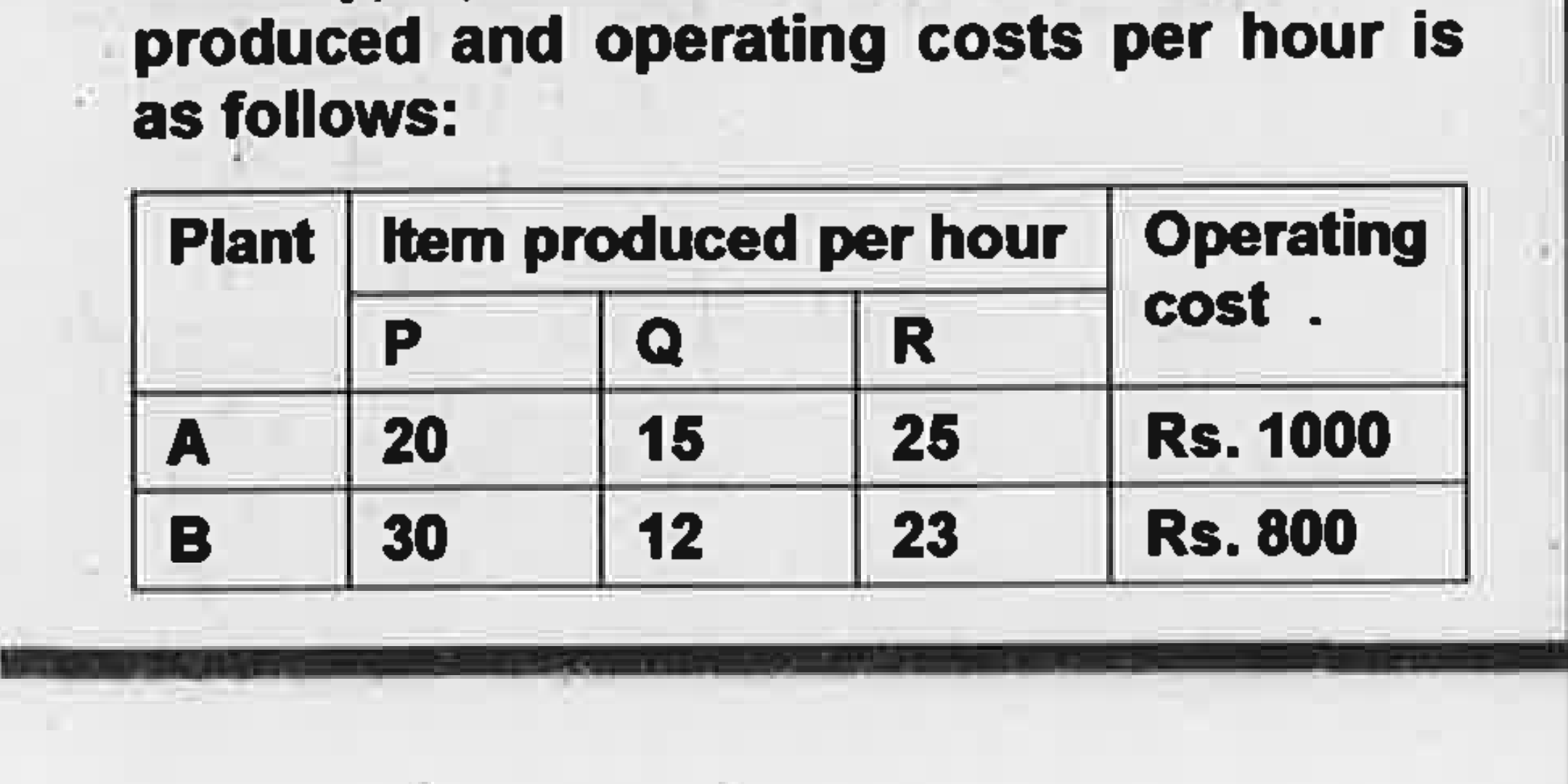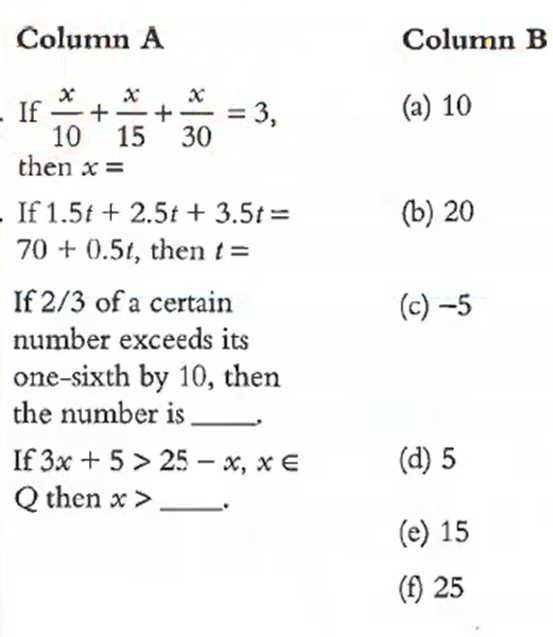A factory produces three items P,Q and R at two plants A and B . The number of items produced and operating costs per hour is as follows:
It is desired to produce at least 500 items of type P , at least 400 items of type Q and 300 items of type R per day.
Write the objective function and constraints.
 Solution in Malayalam
Solution in Malayalam
Step by step video & image solution for A factory produces three items P,Q and R at two plants A and B . The number of items produced and operating costs per hour is as follows: It is desired to produce at least 500 items of type P , at least 400 items of type Q and 300 items of type R per day. Write the objective function and constraints. by Maths experts to help you in doubts & scoring excellent marks in Class 12 exams.
Updated on:21/07/2023Topper's Solved these Questions
- LINEAR PROGRAMMINGBOOK - BODY BOOKS PUBLICATIONCHAPTER - LINEAR PROGRAMMINGEXERCISE - EXERCISE
2 Videos
- INVERSE TRIGONOMETRIC FUNCTIONSBOOK - BODY BOOKS PUBLICATIONCHAPTER - INVERSE TRIGONOMETRIC FUNCTIONSEXERCISE - EXERCISE
97 Videos
- MATRICESBOOK - BODY BOOKS PUBLICATIONCHAPTER - MATRICESEXERCISE - EXERCISE
107 Videos
Similar Questions
Consider the LPP
Maximise z=3x+2y
Subject to the constraints
x+2y≤10,3x+y≤15,x,y≥0
Find the maximum value of Z.
View SolutionProve that
tan−1(12)+tan−1(211)=tan−1(34)
View SolutionFind the inverse of the matrix A=[2174] using column transformation.
View SolutionA factor has three machines A, B and C, which produce 100,200, and 300 items of a particular type daily. The machines produce 2%, 3% and 5% defective items respectively. One day when the production was over, an item was picked up randomly and it was found to be defective. Find the probability that it was produced by machine A.
View SolutionA small firm manufactures items A and B. The total number of items that it can manufacture in a day is at the most 24 Item A takes on hour to make while item B takes only half an hour. The maximum time available per day is 16 hours. If the profit on one unit of item A be 300 and that on one unit of item B be 160, how many of each type of item should be produced to maximize the profit? Solve the problem graphically
View SolutionMatch the following Column A to Column B

View SolutionMachine A can produce 6 items per hour and machine B can produce 11 items per hours. If machine A works for x hours and B works for y hours in a day and both the machines produce at the most 200 items in a day, then frame an inequation to support the above data.
View SolutionThe inequation that best describes the following graph is _________
View SolutionA factory produces 1514 items in 3 days. How many items
will they produce in a week ?
View SolutionMatch the items of column I with those of column II: ltimg src="https://d10lpgp6xz60nq.cloudfront.net/physics_images/NCERT_BIO_XI_C19_E01_011_S01.png" width="80%"gt
View SolutionMatch the items given in column A and B: ltimg src="https://d10lpgp6xz60nq.cloudfront.net/physics_images/NCERT_BIO_XII_C16_E01_004_Q01.png" width="80%"gt
View SolutionA small firm manufactures item A and B. the total number of items that it can manufacture in a day is at the most 24 item. A takes one hour to make while item B takes only half an hour. the maximum time available per day is 16 hour. if the profit on one unit of item A be Rs 300 and that on one unit of item B be Rs 160. how many of each type of item should be produced to maximize the profit solve the problem graphically ?
View SolutionIn a factory two machines A and B produce equal amount of output. On the average 10% item produced by A and 5% item produced by B are defective. Find the probability that an item drwan from a days output is defective:
View SolutionA factory has two machines A and B. Machine A produces 40% of items of the output and Machine B produces 60% of the items. Further 4% of items produced by Machine A are defective and 5% produced by Machine B are defective. An item is drawn at random. If the drawn item is defective, find the probability that it was produced by Machine B.
View SolutionA cottage industry produces a fixed number of items every day. The cost of each item made in a day (in rupees) is more than double the number of items made in that day. The total cost of the goods made that day was Rs. Find out the total number of items made that day which is 90 and the cost of each item.
View SolutionA factory has three machines A, B and C, which produce 100, 200 and 300 items of a particular type daily. The machines produce 2%, 3% and 5% defective items respectively. One day when the production was over, an item was picked up randomly and it was found to be defective. Find the probability that it was produced by machine A.
View Solution
